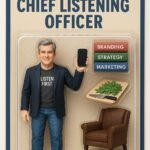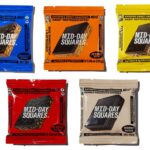Strategic Positioning in CPG: Harnessing the Power of Jobs to Be Done and Disruptive Innovation
In the fast-paced and fiercely competitive world of Consumer-Packaged Goods (CPG), positioning isn’t just about catchy slogans and memorable logos; it’s a strategic exercise that can determine the success of your product or brand, especially when entering a crowded market.
As an expert marketing and branding consultant, I have witnessed the transformative impact of a well-executed positioning exercise countless times.
In this post, we will explore how to integrate the “Jobs to Be Done” framework popularized by Clay Christensen, identify white spaces in the market, and leverage a disruptive business model to create a compelling point of differentiation.
Understanding Positioning in the Context of Jobs to Be Done
Positioning, at its core, is about establishing a unique and meaningful place in the minds of your target audience. To truly excel in positioning, you must grasp the concept of “Jobs to Be Done.” This framework, championed by Clayton Christensen, focuses on the idea that customers “hire” products or services to fulfill specific jobs or tasks. By profoundly understanding these jobs, we can tailor our positioning to meet customers’ needs.
If you don’t know the milkshake story, read this post that explains why consumers “hire” a milkshake for their commute in the morning. It will help you understand how McDonald’s learned why consumers drank milkshakes for breakfast and how they significantly grew milkshake revenue.
Or read this guest post about a wine designed with this JTBD mindset.
Step 1: Market Research Enhanced by Jobs to Be Done
Begin your positioning exercise with thorough market research, now enriched by the Jobs to Be Done framework. Dive into market trends, consumer behaviors, and competitive landscapes. With the Jobs to Be Done lens, you’re not just looking at what products exist but why customers “hire” them. This nuanced understanding can uncover unmet needs and opportunities.
For instance, in our hypothetical CPG scenario of launching a new line of organic snacks, identifying that consumers “hire” snacks not just for taste but also as a convenient and healthy energy source can be pivotal. Digging deeper, perhaps this healthy energy source is positioned for after-school healthy energy.
This past week, as I have been visiting with my grandson, I noticed how my daughter always brought some high-protein drinks for him after picking him up from daycare. Refueling your child with a healthy protein-based snack or beverage is a job to done by mom or dad.
Step 2: Identify the White Space
White space refers to areas in the market where consumer needs are unaddressed or underserved. You can pinpoint these gaps more accurately by applying the Jobs to Be Done framework. In our example, you might discover that while many organic snacks are available, there’s a white space for snacks tailored to specific dietary needs, like gluten-free, high-in-protein, or low-sugar options. Or, using the protein example, is anyone serving parents of young children who need to give them a high-protein energy boost after their school day? Could your product fill this space – and serve a narrow and specific market?
Step 3: Define Your Unique Value Proposition (UVP) with Disruptive Innovation
With insights from the Jobs to Be Done framework and the identified white space, craft your Unique Value Proposition (UVP). This is where disruptive innovation comes into play. Instead of merely following the industry norms, seek a disruptive business model that challenges conventions and delivers unmatched value.
In our organic snack example, your UVP might create snacks catering to specific dietary restrictions, delivering taste and personalized nutrition. Or, positioning can be an occasion or time of day, like after school.
Often, clients will say that being so narrow is too limiting.
The opposite is true. The focused occasion or job to be done makes the positioning resonate with Moms and Dads picking up kids from school. The parent is in a store and recalls your marketing that informs them that just like recharging your phone when the battery is low, kids need that same type of recharge from a portable protein snack or drink.
Step 4: Crafting Your Positioning Statement
Now, craft a positioning statement that encapsulates your UVP, considering the Jobs to Be Done insights. Our scenario could be: “Empowering your busy life with snacks tailored to your unique dietary needs.” Or “empowering parents of young children whose kids need a portable protein snack or drink on the drive home from school.”
Step 5: Testing, Consistency, and Adaptation
Continuously test your positioning and gather feedback to ensure it resonates with your target audience. Maintain consistency across all branding and messaging to reinforce your message. Stay agile and adapt as market dynamics evolve. You should constantly be testing your positioning with real consumers in research to help convince yourself and your team that your idea resonates with the consumers you serve for the job they need to do.
What Job Does Your Product Do?
In the crowded CPG landscape, the success of your product or brand relies on its ability to meet the real-life “Jobs to Be Done” for consumers. Integrating this framework, identifying white space, and leveraging disruptive innovation can give you a strong point of differentiation.
A well-executed positioning strategy that aligns with these principles will help you rise above the competition, create lasting impressions, and secure a coveted place in the hearts and lives of consumers. Embrace the power of positioning, powered by Jobs to Be Done and disruptive innovation, to thrive in even the most competitive markets.
If you are embarking on a new product or new brand startup, a conversation with an experienced expert may be the best investment you’ll make in your business. Whether you connect with me or another branding agency, you must understand why consumers will hire your product or brand.
You can set up a time to chat with me about your marketing challenges using my calendar. Email me jeffslater@themarketingsage.com Call me. 919 720 0995. The conversation is free, and we can explore if working together makes sense. Watch a short video about working with me.
Photo by note thanun on Unsplash





